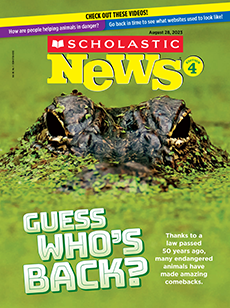1. Based on the article, what are ultra-processed foods?
Based on the article, ultra-processed foods are foods with few nutrients but high levels of ingredients that can cause health problems, like sugar and salt.
(RI.4.4 Determine Meaning)
2. In the “yes” section of the article, why does the author mention cigarette packs?
The author mentions cigarette packs because some people argue that some snack foods should have labels similar to the ones on cigarette packs. The author notes, “Eating these foods can lead to some of the same health problems that smoking cigarettes causes.”
(RI.4.8 Author’s Purpose)
3. According to the “no” section of the article, what message might warning labels on snacks send? Why is that concerning to some experts?
According to the “no” section, labels may send the message that certain foods are “bad.” That is concerning to some experts, who say that it’s OK to enjoy sweet or salty treats sometimes.
(RI.4.5 Cause and Effect)
